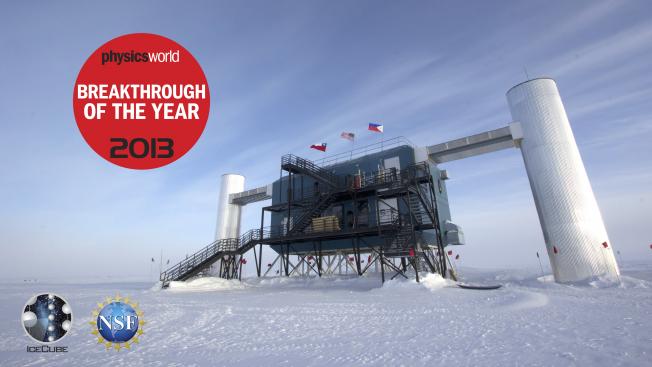LeptonInjector and LeptonWeighter: A neutrino event generator and weighter for neutrino observatories
Computer Physics Communications 266 (2021)
Abstract:
We present a high-energy neutrino event generator, called LeptonInjector, alongside an event weighter, called LeptonWeighter. Both are designed for large-volume Cherenkov neutrino telescopes such as IceCube. The neutrino event generator allows for quick and flexible simulation of neutrino events within and around the detector volume, and implements the leading Standard Model neutrino interaction processes relevant for neutrino observatories: neutrino-nucleon deep-inelastic scattering and neutrino-electron annihilation. In this paper, we discuss the event generation algorithm, the weighting algorithm, and the main functions of the publicly available code, with examples. Program summary: Program Titles: LeptonInjector and LeptonWeighter CPC Library link to program files: https://doi.org/10.17632/662gkpjfd9.1 Developer's repository links: https://github.com/icecube/LeptonInjector and https://github.com/icecube/LeptonWeighter Licensing provisions: GNU Lesser General Public License, version 3. Programming Language: C++11 External Routines: • Boost • HDF5 • nuflux (https://github.com/icecube/nuflux) • nuSQuIDS (https://github.com/arguelles/nuSQuIDS) • Photospline (https://github.com/icecube/photospline) • SuiteSparse (https://github.com/DrTimothyAldenDavis/SuiteSparse) Nature of problem: LeptonInjector: Generate neutrino interaction events of all possible topologies and energies throughout and around a detector volume. LeptonWeighter: Reweight Monte Carlo events, generated by a set of LeptonInjector Generators, to any desired physical neutrino flux or cross section. Solution method: LeptonInjector: Projected ranges of generated leptons and the extent of the detector, in terms of column depth, are used to inject events in and around the detector volume. Event kinematics follow distributions provided in cross section files. LeptonWeighter: Event generation probabilities are calculated for each Generator, which are then combined into a generation weight and used to calculate an overall event weight.Probing neutrino emission at GeV energies from compact binary mergers with the IceCube Neutrino Observatory
(2021)
Strong suppression of heat conduction in a laboratory replica of galaxy-cluster turbulent plasmas
(2021)
Generating ultradense pair beams using 400 GeV/c protons
Physical Review Research American Physical Society 3 (2021) 023103
Abstract:
An experimental scheme is presented for generating low-divergence, ultradense, relativistic, electron-positron beams using 400 GeV/c protons available at facilities such as HiRadMat and AWAKE at CERN. Preliminary Monte Carlo and particle-in-cell simulations demonstrate the possibility of generating beams containing 1013–1014 electron-positron pairs at sufficiently high densities to drive collisionless beam-plasma instabilities, which are expected to play an important role in magnetic field generation and the related radiation signatures of relativistic astrophysical phenomena. The pair beams are quasineutral, with size exceeding several skin depths in all dimensions, allowing the examination of the effect of competition between transverse and longitudinal instability modes on the growth of magnetic fields. Furthermore, the presented scheme allows for the possibility of controlling the relative density of hadrons to electron-positron pairs in the beam, making it possible to explore the parameter spaces for different astrophysical environments.A Search for Time-dependent Astrophysical Neutrino Emission with IceCube Data from 2012 to 2017
ASTROPHYSICAL JOURNAL 911:1 (2021) ARTN 67



